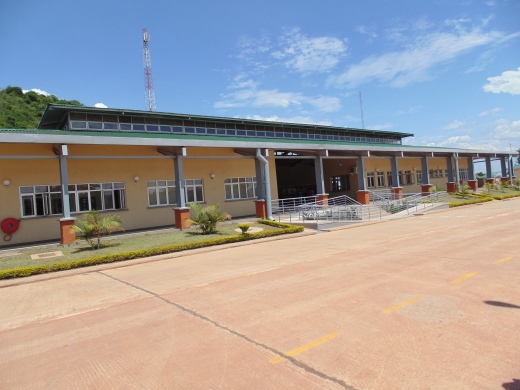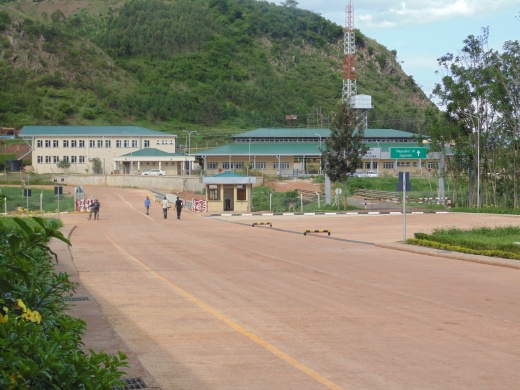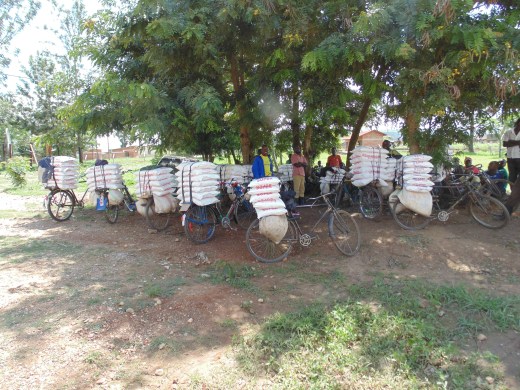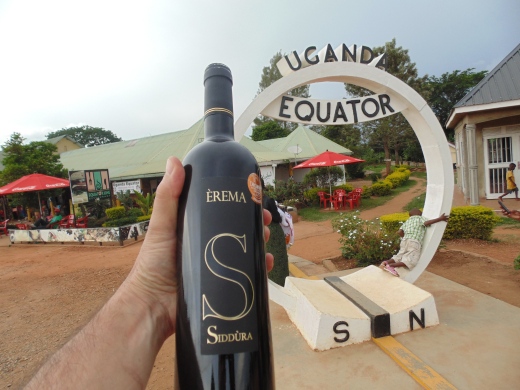Within the larger framework of regional integration across Africa, One-Stop Border Posts (OSBPs) loom especially large because they are the sites where ‘delay-busting’ is the cardinal objective. A considerable amount of internal and external financing has gone into constructing new facilities where Customs and Immigration from neighbouring countries are supposed to sit next to each other and to work in liaison with one another. At the OSBP, it is necessary to stop only once: that is at the point of entry.
In 2014, I was able to visit OSBPs under construction on both sides of the Kenya-Uganda border: at Busia and Malaba. Re-visiting these sites, with the assistance of TradeMark East Africa, has been very enlightening. There is still a lot of work to be done to complete the support roads at the OSBP in Busia-Uganda, but its close to being fully operational, with Customs and Immigration officers from the two countries working alongside each other [Photograph 1]. Because so many vehicles enter Uganda in transit, the Uganda side is certainly busy. Its also rather efficient. The Kenyan facility is notionally close to completion, but it is difficult to discern very much that has been added since 2014 with the exception of a much-needed administrative block for the Kenya Revenue Authority. Because the buildings are cramped, Customs officers cannot work alongside each other on the Kenya side, which is clearly a problem. In the case of Malaba, which processes much more cargo, it seems that there is a closer match between facilities on the two sides of the border.

This research trip has also provided an opportunity to visit two OSBPs on the Uganda-Rwanda border. At Katuna (Uganda)/Gatuna (Rwanda), there is a lot of work to be done – especially on the Ugandan side where they have been trying to erect the buildings on what is effectively a swamp [Photograph 2].

These OSBPs depends on financing from the two governments, with limited injections of donor support, which might explain why they are lagging behind. There is some cargo that comes through this post [Photograph 3] – notionally on the same scale as Busia, although it doesn’t appear so to the naked eye – as well as passenger buses running between Kigali and Kampala.

Some vehicles destined for Goma in DRC also pass through this crossing because the direct route to the DRC is poor and distinctly unsafe. At Mirama Hills (Uganda)/Kagitumba (Rwanda), there are two vast, gleaming OSBPs that are a pleasure to behold! [Photographs 4, 5] These are the most impressive facilities we have seen – with toilet facilities to match and cafeterias to come – but at the moment there is almost no cargo because the road on the Uganda side is still under construction.


However, there is a significant amount of small-scale trade carried out by means of bicycles rather than the otherwise ubiquitous boda boda [Photograph 6 of maize flour traders on Rwanda side]. But when the road is complete, it is anticipated that around 40% of the traffic from Katuna will be redirected through Mirama Hills. One senses the impatience of local officials – who are all dressed up with no one to process!

Although there is a lot of work to be done in terms of putting in the enabling infrastructure and reconciling IT systems, the OSBPs have significantly reduced wait times at the border. In 2014 there were miles-long queues of vehicles at Busia, but there were very few trucks backed up this time around [Photograph 7]. The ways in which border officials have embraced the concept of the OSBP is also a positive sign of a culture shift. The remaining blockages are rooted less in the way institutions function at the border than in the priorities of politicians in the respective capitals. Despite the teething problems, the overall picture is pretty positive.

Since this is a blog about borders and wine, I cannot neglect to mention the unofficial project mascot: a travel-seasoned bottle of Sardinian wine that has now crossed two European and two African borders … and even stopped to pose for a photo at the Equator. There is a surprising amount of wine available these days in Uganda and especially Kenya – much of it from South Africa, but also from Italy and France. Some of it is even on the high end. The more unexpected encounters have been with Four Cousins and Tassenberg in tiny bars and shops at the Rwanda border.
Thought for the day: should one swirl the wine anti-clockwise south of the Equator? [Photograph 8]

